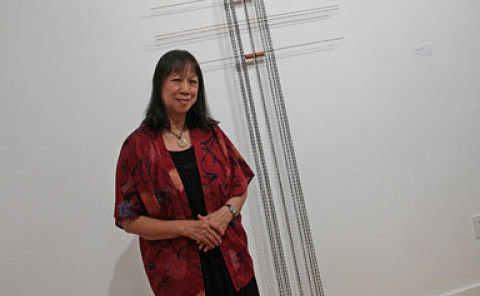 Judi Michelle Young in front of her sculpture, Roots (detail). Photo: Marg King
Judi Michelle Young in front of her sculpture, Roots (detail). Photo: Marg King
Interview with Judi Michelle Young (JMY) by Alexis Moline (AM)
AM: You are using your Chinese name, Tsuii Yiin for this show. Why? Could you briefly explain the history you explore in the exhibition?
JMY: I felt that I should use my “real name” for father’s sake since it’s a historical narration about him and our family. Judi was a “name” given me by a family friend, since elementary school teachers could not pronounce my name.
June Callwood (Canada’s revered writer and activist) had encouraged me to write down my family’s story – but I felt I had to do the “visuals” first…. as I am a “visual artist.”
China was experiencing the worst period of famine ever! Even though father and his brothers (my uncles) were from a well-to-do landowners family – they felt forced to join the “help Canada build the western part of the railway” group in late 1870s. These labourers were paid a “princely sum” of 75 cents/day. That amount was to cover their expenses: winter clothing/gloves, cooking equipment, food supplies, and tents that they bunked in. Other workers were paid more without those expenditures. Unfortunately the directors of the labour group had also reneged on their original agreement. It was stipulated that they would bring the workers in, and once that portion of the railway was completed – the labourers would be sent home. Instead the workers were left in Canada as “aliens” and a “Head Tax” was implemented on all “in-coming” immigrants from China after the completion of the railway.
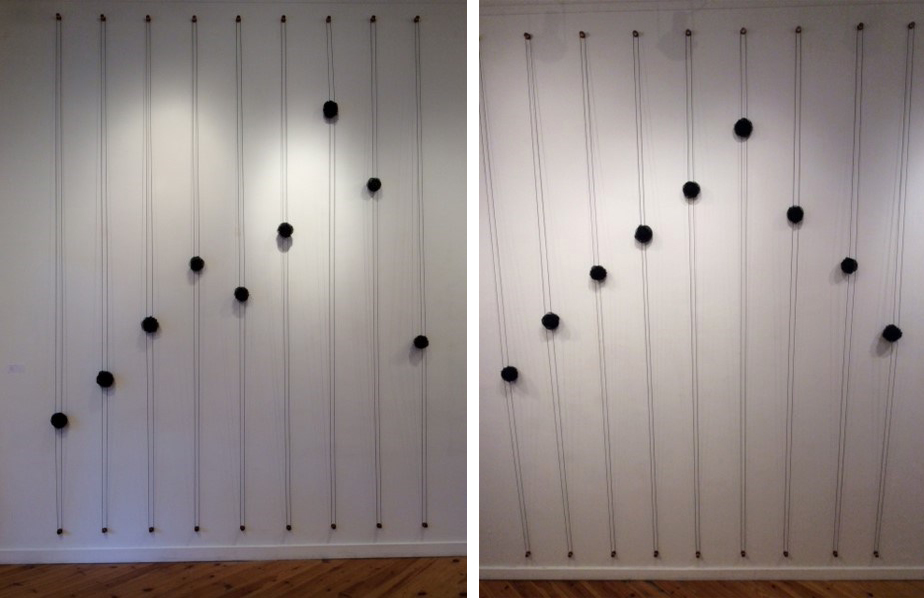 Mountain #1 & 2, cotton, anodized aluminum, glass, steel, copper, 345 x 240x 10 cm each
Mountain #1 & 2, cotton, anodized aluminum, glass, steel, copper, 345 x 240x 10 cm each
Due to the fact that father was literate, learned English quickly and assisted in translating for the CPR – may have helped to be awarded Canadian citizenship in 1899.
Even though father received this “great honour” – he felt it was time to settle down with a wife from China. But he was still subjected to the Head Tax, which he paid – $50 for himself and $50 for his bride #1. She was deported on entry. Sadly when he went back to look for her, she had already left, feeling that he had deserted her. Yet he never knew he had fathered a daughter – nor ever saw them again! Marrying a second wife, he paid $100 for himself and $100 for bride #2. She was also deported on entry. That did not deter father! On his third try – he found bride #2 and paid $500 for each. But this time he was successful.
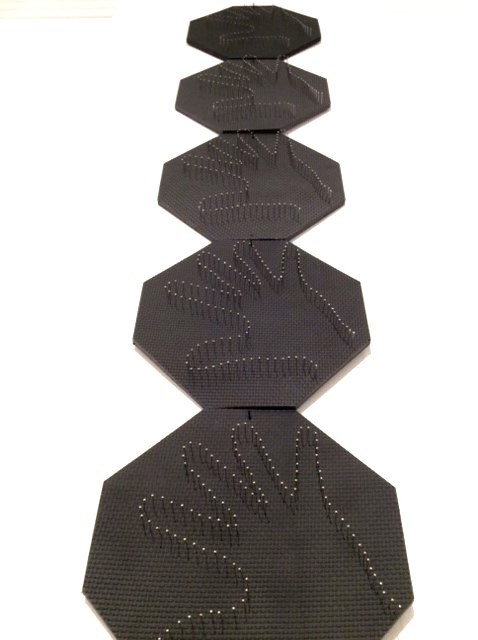 Hands of Pain, stainless steel pins, latex, 240 x 27 x 3 cm
Hands of Pain, stainless steel pins, latex, 240 x 27 x 3 cm
By the 30s, outliving his second wife, father returned to China to marry a third time. Due to the “Exclusion Act” mother could not enter Canada at all. Once again, communication had ceased, due to the Japanese invasion, and all funds sent by father was confiscated. My brother died of starvation and father never knew that mother had given birth to a son.
After the war father returned to search for mother – and amazingly – bumped into her on a busy street in the city.
Unfortunately life took another sad turn as father completed his new brick house for wife #3. Civil war had broken out forcing them to leave for Canada. Luckily the Exclusion Act had already been repealed!
AM: How has your father’s experience inspired your work until now? Have you created any other art works on this subject before?
JMY: Father’s and mother’s experiences have influenced my life and my work in many ways. Being raised in Toronto by very traditional Chinese parents helped me to “grow up quickly”. There was no time for regular “childhood.” I did laundry and scrubbed floors by the time I was 7- 8 year old. My financial experience took place as a cashier by the time I was 9. I was always the first to get a summer job. Saving what little I earned helped to put me through school and university.
Working hard, having integrity and taking pride in doing my best was important in our family.
I’ve always challenged myself to be creative and truly original in my work. As it was once said by one of my professors: I’m always “fighting with my materials.”
Encouraged by June Callwood to focus on my family’s history, I started working on various parts for many years.
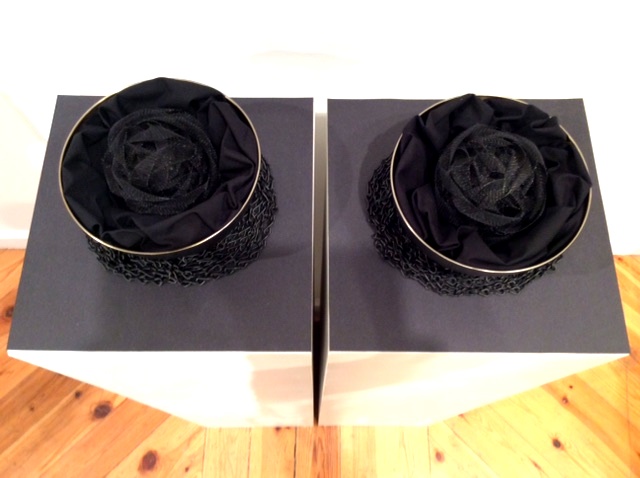 Bowl of Cherries? #1 & #2, cotton, anodized aluminum, glass, stainless steel, 14 x 23 x 23 cm each
Bowl of Cherries? #1 & #2, cotton, anodized aluminum, glass, stainless steel, 14 x 23 x 23 cm each
AM: How were you able to translate your emotional and personal connection of Chinese labourers working for the CPR into sculpture? Did you find it difficult to distill such a complex history into art?
JMY: It was quite difficult to separate the two, especially in the beginning. That may be why I couldn’t tackle this at all for quite a long time. Self analysis helped to “distance myself from the emotional” – enabling me to that creative space in order to explore these industrial materials. These materials narrated my story.
AM: The theme of shrouding eyes and hanging heads is present in these works. How do you feel this metaphor works and what do you want to express with them on various levels?
JMY: Each of the shrouded eyes are made individually by hand: glass balls representing the eyes – shrouded by anodized aluminum screening – is a metaphor for “blindness.” These men were brought here “blindfolded” to blast through the Rockies….where more than 4000 died in order to consolidate Canada’s confederation.
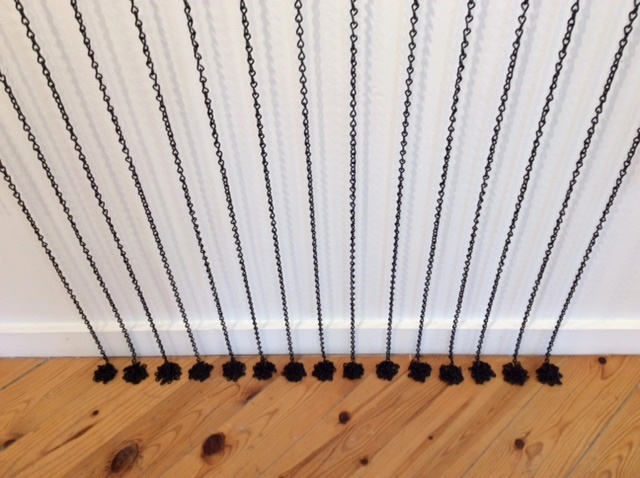 Mourning Veil, steel, 378 x 107 x 7 cm, detail
Mourning Veil, steel, 378 x 107 x 7 cm, detail
AM: The use of industrial hardware and dark imagery is significant in this exhibition. How did you decide to use these materials and visuals?
To be honest – I don’t know exactly. I like non-typical materials. And by combining various materials helped me to tell my story.
AM: This show reveals a very introspective and intimate perspective on a very significant moment in Canadian history. Do you want to increase awareness and understanding of this troubled part of the past?
JMY: Of course! Many Canadians are not aware of this important part of Canada’s history. Chinese contribution in consolidating confederation is not taught in schools. In fact – it’s not mentioned anywhere! Pierre Burton’s 2-volume book on the building of the railway contains one small paragraph which mentioned that the Chinese workers were paid “the lowest.” And that’s it!
Very few people have personal knowledge of this sad part of Canadian history. My sister and I are probably the only “living direct-descendants” of a CPR railway worker in this country!
And finally – I’d like to thank Susan Crean (Author of Emily Carr – The Laughing One) who curated my show – for her understanding, patience, and encouragement.
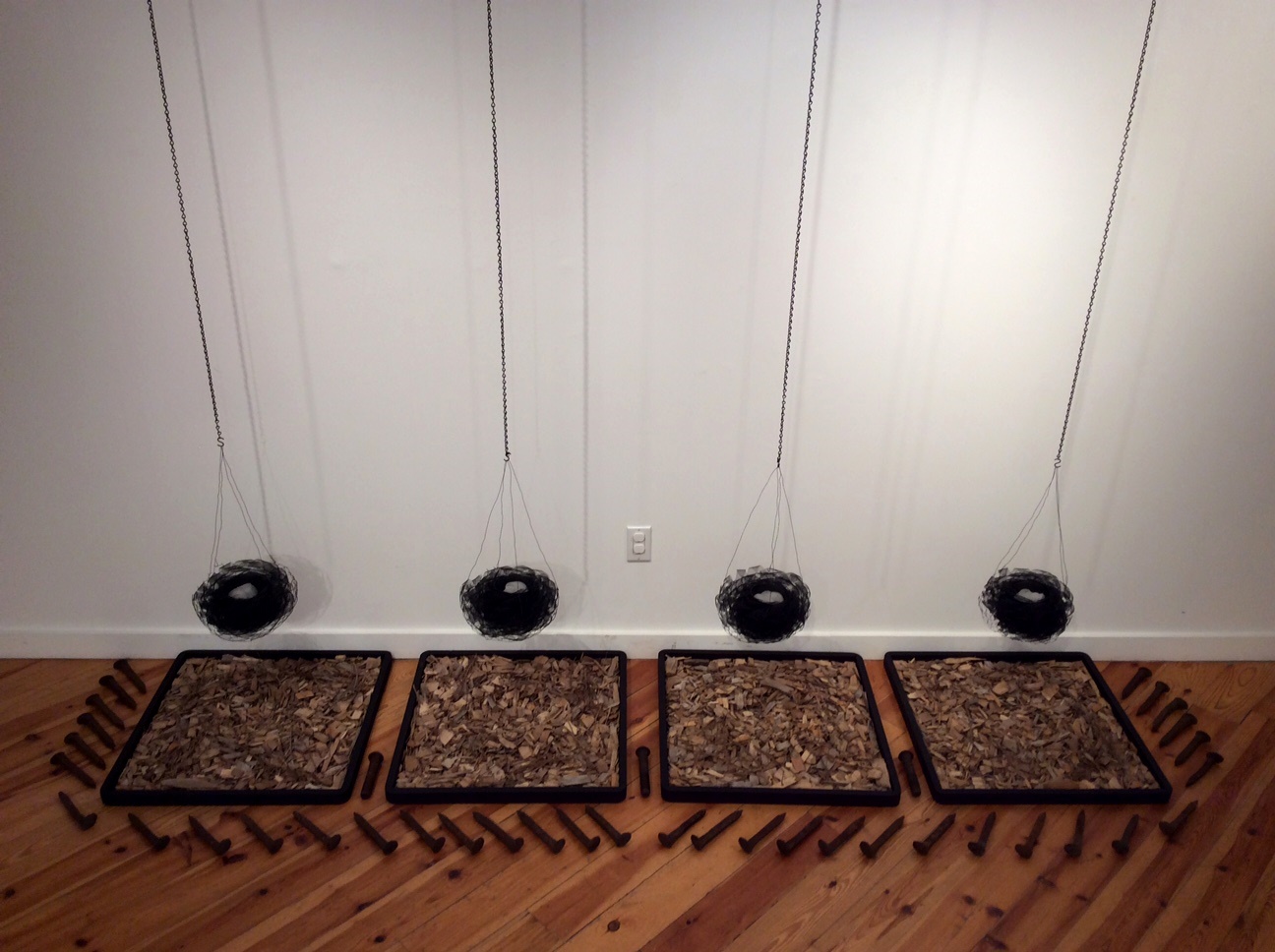 Portraits I – IV, steel, anodized aluminum, wax, aluminum, cedar, longan twigs, iron bolts, iron spikes 315 x 285 x 80 cm
Portraits I – IV, steel, anodized aluminum, wax, aluminum, cedar, longan twigs, iron bolts, iron spikes 315 x 285 x 80 cm
AM: What’s next Judi?
JMY: Wait … and see…
Images are courtesy of the artist.
*Exhibition information: Tsuii Yiin, Just-US III, curated by Susan Crean, October 14 – November 3, 2017, Canadian Sculpture Centre, 500 Church Street. Gallery hours: Tue – Fri: 12 – 6, Sat: 11 – 4 pm.
